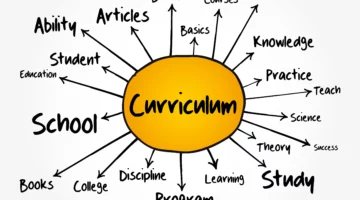
Transforming Education: The Power of Educational Technology Tools
Introduction
In today’s rapidly evolving world, education technology tools, often referred to as EdTech, have become invaluable assets in classrooms, training programs, and self-directed learning. These innovative tools leverage technology to enhance the learning experience, making education more accessible, engaging, and effective. In this article, we’ll explore the realm of educational technology tools, their impact on education, and the ways they are shaping the future of learning.
The Evolution of Educational Technology
Educational technology has come a long way since the advent of computers in the classroom. From simple educational software programs to advanced artificial intelligence-driven platforms, EdTech has evolved to cater to the diverse needs of learners across the globe. Today, these tools encompass a wide array of applications, including:
- Learning Management Systems (LMS): These platforms facilitate the management and delivery of educational content, offering features like online courses, assignments, grading, and collaboration tools.
- Interactive Whiteboards: Interactive whiteboards enable dynamic, multimedia-rich lessons, encouraging student engagement and participation.
- Virtual Reality (VR) and Augmented Reality (AR): These technologies provide immersive learning experiences, allowing students to explore historical sites, conduct virtual experiments, or visit far-off places, all from the classroom.
- Online Learning Platforms: Platforms like Coursera, edX, and Khan Academy offer a vast repository of courses, enabling learners to acquire new skills and knowledge at their own pace.
- Adaptive Learning Software: These tools tailor lessons to individual learners, adapting the content and pace based on a student’s strengths and weaknesses.
- Educational Apps: Mobile apps cover a wide range of subjects, from language learning to math and science, making education accessible anytime, anywhere.
Impact on Education
The adoption of educational technology tools has brought about several significant impacts on the educational landscape:
- Accessibility: EdTech has made education accessible to learners of all ages, regardless of geographical location. It breaks down barriers to education, allowing individuals to learn remotely or at their own pace.
- Engagement: Interactive and multimedia-rich content enhances engagement and retention. Students are more likely to stay interested and motivated when learning through technology.
- Personalization: Adaptive learning tools cater to individual learning styles and abilities, ensuring that no student is left behind.
- Data-Driven Insights: Technology tools provide educators with valuable data and analytics, helping them assess student performance, identify areas of improvement, and refine teaching methods.
- Global Collaboration: Online platforms facilitate global collaboration, connecting students and educators from different parts of the world to share knowledge and ideas.
- Professional Development: EdTech is not limited to students; it also provides opportunities for educators to enhance their teaching skills and stay up-to-date with the latest educational practices.
Challenges and Considerations
While educational technology tools offer numerous benefits, they also come with challenges and considerations:
- Digital Divide: Access to technology and the internet remains unequal, creating a digital divide where some students have better access to EdTech tools than others.
- Privacy and Security: Safeguarding students’ data and ensuring online safety are critical concerns when using technology in education.
- Teacher Training: Educators need adequate training and professional development to effectively integrate EdTech into their teaching practices.
- Overreliance: There is a risk of overreliance on technology, potentially diminishing the importance of in-person instruction and human interaction.
- Cost: Implementing and maintaining technology tools can be costly, posing challenges for schools with limited budgets.
Conclusion
Educational technology tools have revolutionized the way we learn and teach. They have the potential to democratize education, increase engagement, and personalize learning experiences. However, it’s crucial to strike a balance between technology and traditional teaching methods, ensuring that the benefits of EdTech are maximized while addressing challenges and considerations. As we continue to explore the vast possibilities of educational technology, it’s evident that these tools will play an increasingly pivotal role in shaping the future of education, preparing students for a world driven by technology and innovation.



